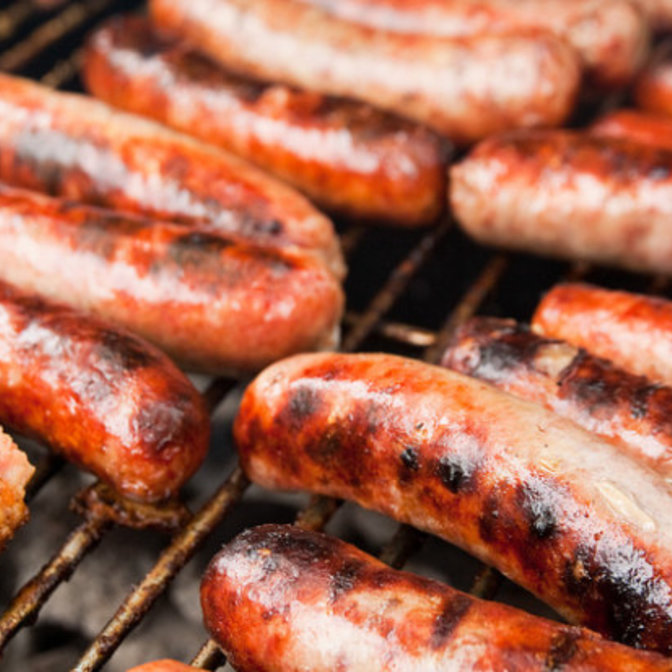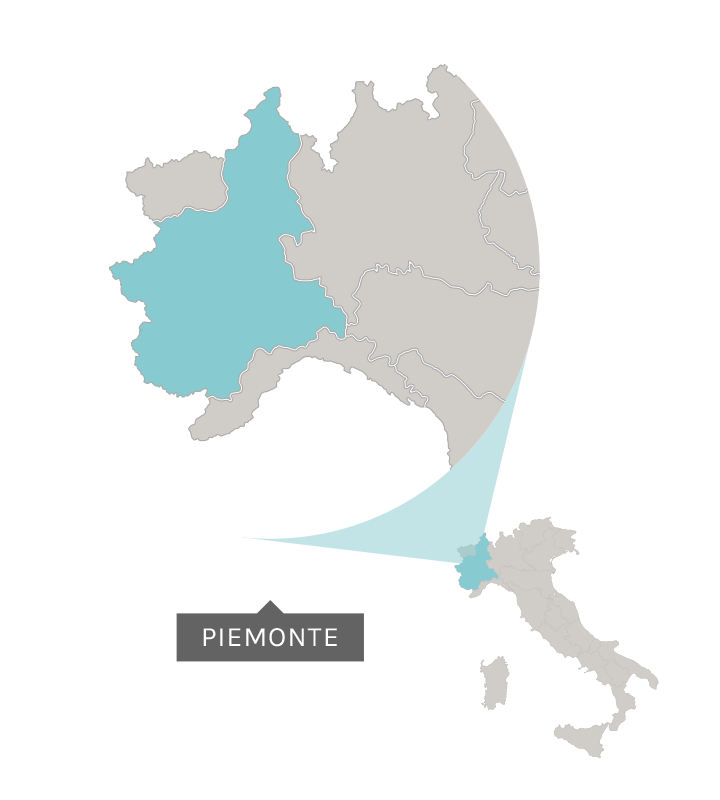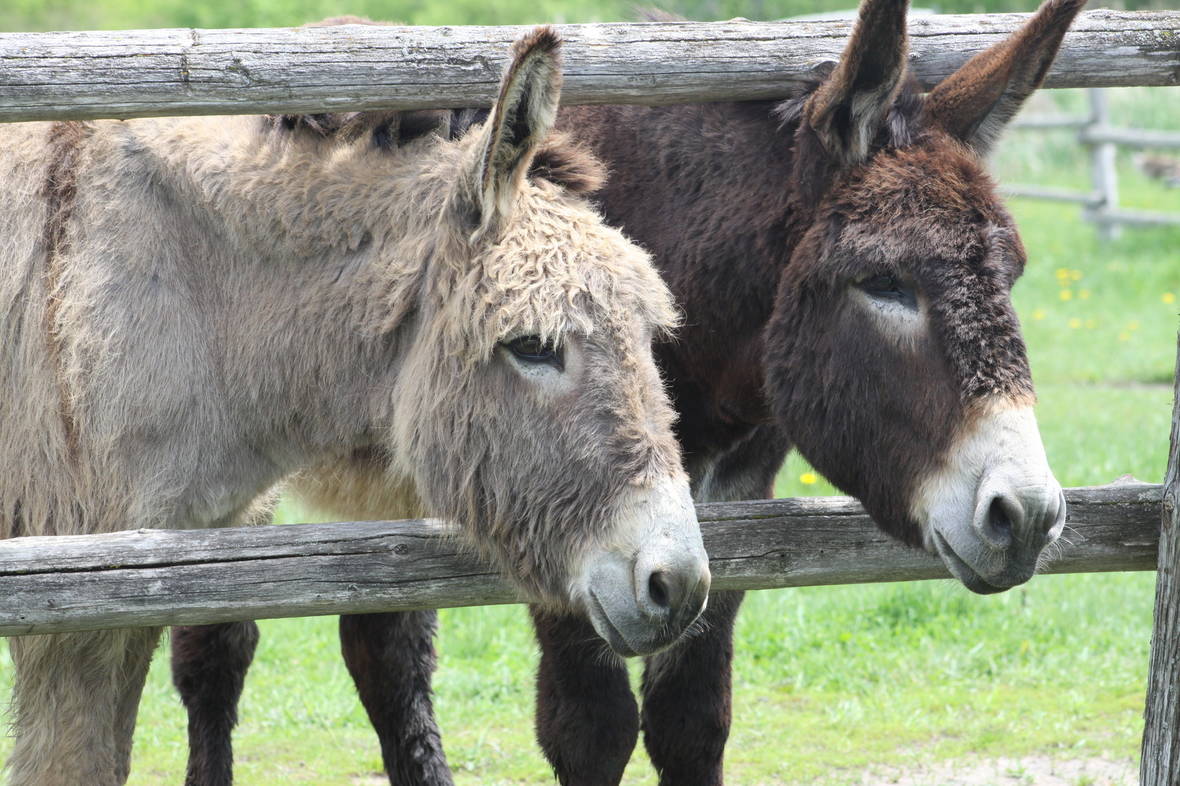Among the gentle hills of the province of Asti lies Castelnuovo Don Bosco, a small town famous for its link with Salesian priest Don Giovanni Bosco. A town of ancient traditions, Castelnuovo Don Bosco is surrounded by beauty and tranquillity, as well as a constant aura of reassuring benevolence - Don Bosco's legacy.
Discover all the excellence in this Riserva
 Places & Landscapes
Places & Landscapes Culture
Culture Food & Wine
Food & Wine Passionate Individuals
Passionate Individuals Curiosity
Curiosity Events
Events
Donkey and Hound
Cocconato d'Asti Donkey Racing
In Italy, palio festivals feature races run by horses or other animals. The animals participating in the race represent the neighbourhoods of a town, which compete against one another in this annual celebration.
The term palio refers to the drape or flag that the winning neighbourhood receives to commemorate the race.
Many palio festivals have medieval roots – including the Palio di Ferrara, which has been run since 1259, and the world-famous Palio di Siena, which has its origins in the 14th century – and they were traditionally organized to celebrate military victories, or simply as a form of local entertainment.
Other palios, such as the Palio degli Asini (donkey palio) in Cocconato d’Asti, have a much more recent history. However, while Cocconato d’Asti’s palio only began in the year 1970, the festival commemorates the town’s medieval history and is a celebration of local legends.
An ancient tale has it that a fire once broke out in the town’s castle.
To save the structure, local citizens formed a human chain between the castle and a stream outside of town, and with the help of donkeys transported water from the stream to the castle to extinguish the flames. When the castle was saved, local lords called for a tournament with a donkey race, and the participants competed for a banner bearing the local family crest.
The modern day competition is held between eight Cocconato d’Asti neighbourhoods, each of which must prepare their portion of the historical procession that precedes the race, and put together a team to run with the donkey that will represent them in the palio.
The race is run on the fourth Sunday of every September, and in the days leading up to the competition the entire town partakes in the festivities.
Local businesses recreate the ambience of a medieval street fair by setting up stands to sell local goods. Medieval games and music are played, wizards, fortune-tellers and fire-eaters perform on the streets, and motor-powered vehicles are banned from the area, all in an attempt to give participants a taste of medieval street life.
The main event takes place on Sunday afternoon and often attracts thousands of spectators from near and far; indeed, Cocconato d’Asti’s Palio degli Asini is one of the most well known annual festivals in the area.
Any suggestions?© All rights reserved.
The Voice of Youth
Don Giovanni Bosco
The Voice of Youth
Don Giovanni Bosco
One of the most notable spiritual figures from Piemonte, Don Giovanni Bosco was born in Colle dei Becchi in 1815 and is remembered, among other things, for being a youth advocate and founding the Salesian Congregation and Salesian Sisters of Don Bosco.
Born in a farming family, the young Giovanni struggled throughout his childhood to work and study.
In 1831, at the tender age of sixteen, he moved to Chieri to attend school and religious study. After ten years of education he was spiritually and culturally mature to undertake his spiritual calling. In 1841, he became a priest and refused several job offers. Giovanni always tried to follow his mother’s wise words: “if by misfortune you become rich, I will never set foot in your house”.
He instead chooses to search the city streets of Turin to see the conditions of homeless youth and visits other youth in jail telling them to visit the San Francisco church once they are free. In 1846, he is able to find a small place for what he called ‘his children’ – a canopy with a piece of garden, named the Pinardi Canopy.
All of Don Bosco’s actions since becoming priest are geared towards helping the younger generation, especially the poor and abandoned ones.
In 1854, Don Bosco founded the Salesian Congregation and in 1872 the Salesian Sisters of Don Bosco to secure the physical operas and its spiritual significance for the future. The two religious movements have been continuing his calling since Don Bosco’s death in 1888.
Declared a saint by Pope Pio XI in 1934, Don Bosco became one of the most well-known spiritual advocates for youth.
Any suggestions?© All rights reserved.
A Specialty
by the Women
of Cocconato
Robiola di Cocconato
A Specialty by the Women of Cocconato
Robiola di Cocconato
Robiola di Cocconato is a P.A.T. (Traditional Agricultural food Product) certified cheese that originates from the Cocconato commune within the Asti province of Piedmont.
Its name (robiola) derives from its appearance, as the cheese once used to have subtle crimson hues on its exterior and the term robium, Latin for red, was utilised when forming its name.
The creation of robiola di Cocconato was traditionally done by the women of the small town of Cocconato and ultimately this cheese became so famous that it is now regarded as the area’s specialty.
A soft cheese made from cow’s milk, robiola di Cocconato is aged for as little as five days and can be produced year-round.
It is a crustless white cheese when young, and even when mature, the crust only reaches a fine composition.
Previously produced entirely as a raw cheese, robiola di Cocconato currently has an acidic taste added to its flavour from its pasteurisation process. It is a cheese that is easily adaptable in diverse recipes and couples well with white wine.
Any suggestions?© All rights reserved.
Charlemagne's Vision
Abbazia di Vezzolano
Charlemagne's Vision
Abbazia di Vezzolano
Piedmont’s most important Romanesque complex, the abbey of Vezzolano is a Benedictine Monastery nestled amongst the rolling hills and vineyards that lie between Asti and Monferrato.
Legend tells that the monastery was founded in 773 by Charlemagne who, while out hunting in the woods near Albugnano, suffered a form of epileptic fit and envisioned three dancing human skeletons before him. Cured from this frightening scene by the divine intervention of the Madonna, he resolved to build an abbey on the same spot. Sadly, it is more likely that in reality the abbey foundations were laid in 1095, but a bit of poetry is always welcome.
Standing at the bottom of one of the Monferrato region’s highest hills, at the end of a small road, visitors are able to catch a glimpse of the abbey’s bell tower and main buildings before actually arriving.
The sporadic nature of the building works that took place in the later 12thand early 13th century lead to the abbey being characterized by a mixture of Romanesque and early Gothic styles.
The original Romanesque façade can still be seen, built of terracotta and sandstone it has a beautiful doorway with bas-reliefs, while the bell-tower rises elegantly to the left.
Within the building lies the altar, where a 15th century gothic-style painted terracotta triptych stands, showing the Virgin with child with St. Augustine by her side. On her left is a monk, who tradition dictates to be Charlemagne, but who is more likely to be Charles VIII of France.
The end of the right-hand nave has a door, which leads to the cloisters, decorated with remains of 13th and 14th century frescoes and classically-styled capitals.
If you are searching for something special in the idyllic Albugnano landscape, then look no further: the Abbey of Santa Maria remains of great spiritual importance and is also considered a true gem of the Late Romanesque period in Piedmont.
Any suggestions?© All rights reserved.
It's All About Family... Spirits
Antica Distilleria Quaglia
It's All About Family... Spirits
Antica Distilleria Quaglia
In addition to producing many of the world’s best wines, Italy is also quite well known for its fine digestive liqueurs.
While you might think Italy’s incredible abundance of top-quality raw materials would suffice in the recipe for success, there is one more indispensable ingredient necessary: family tradition.
Indeed, family tradition is what has made the Antica Distilleria Quaglia a cut above the rest. The distillery, located in Castelnuovo Don Bosco in the province of Asti, has been a family-run business for over four generations.First founded in the years immediately following the unification of Italy, it was then purchased in 1906 by Giuseppe Quaglia.
One of Giuseppe Quaglia’s first decisions was to expand the distillery by installing a boiler to produce steam and adding a well, which would supply the factory with fresh water.
Years later, in 1930, Quaglia’s son Carlo would begin to run the business under the watchful eye and sage advice of his father. While learning the intricacies of the distillation process, Carlo Quaglia would revamp and modernize the bottling area.
The reins of the family business would then pass on to Giuseppe Quaglia’s grandson in 1967, and eventually to Quaglia’s great-grandson, Charles Knight, who is running the business today.
An endless variety of grappas, limoncello, vermouth, and other products are still produced according to the same exceedingly high standards Giuseppe Quaglia insisted upon more than 100 years ago.
Knight’s passionate adherence to his grandfather’s standards combined with his innovative ideas has led to the addition of specialty liqueurs to the company’s line. These include: Genepi (a liqueur made form juniper berries), Barolo Chinato, Gianduja cream liqueur, and Ratafià with Pecetto cherries. There is also a vintage collection, which allows connoisseurs to fondly recall tastes from the past.
While an excellent product certainly calls for superior ingredients, it’s clear that passion, dedication, and family spirit are Antica Distilleria Quaglia’s key ingredients.
Any suggestions?© All rights reserved.
Colle Don Bosco
Don Bosco Sanctuary
Colle Don Bosco
Don Bosco Sanctuary
Next to the birthplace of Don Giovanni Bosco, the Piedmont priest canonized as a saint in 1934, is the sanctuary dedicated to him.
Desired and built by Salesians after World War II in Castelnuovo Don Bosco (about 15 km northeast of Chieri), the sanctuary’s construction began in 1961 and finished a couple of years later. The sanctuary only became accessible in 1984 but quickly became the centre for Salesians and Don Bosco’s teachings.
The structure is composed of two large overlying churches and a small dome.
The superior church has modern architecture and contains an organ pipe and the wooden statue of Jesus Christ created by sculptor Corrado Piazza. Made of lime wood and about 26 feet (8 meters) tall, the statue represents the premonitory dream that Don Bosco had as a child in which he knew his calling was to help disadvantaged youth.
On the aisles are the fourteen statues representing the via lucis (way of light) made by Giovanni Dragoni. The painter Mario Bogani di Fegano created six artworks that represent fundamental themes of Don Bosco’s life and the youth he worked to help. The same artist also created a fresco placed at the top of the stairs that lead to the superior temple that embodies the youth of the world entrusted to Don Bosco.
The inferior church comprises ten shrines and ten altars made up of glass that replicate the saints of the Salesian tradition, while the tomb contains the relics of Don Bosco.
If you’re in the area, a visit to the birthplace of the Salesian founder and saint Don Bosco is a universal life lesson.
Any suggestions?© All rights reserved.
200 Years of Peppers
Capriglio Peppers
200 Years of Peppers
Capriglio Peppers
Since the 19th century, the production of Peperone di Capriglio, or peppers of Capriglio, has been taking place in the homonymous town within the region of Piedmont.
With beautiful colours ranging from red to yellow and sometimes even green, these robust and savoury peppers do not grow very tall, as they are fruits with age-old origins.
These local specialties can be considered fully grown at a small to medium size, and begin to be ripe at the end of summer. August marks the start from when the Capriglio peppers can be harvested, and the season lasts only until October.
The local technique used to conserve the peperone di Capriglio begins with cleaning the peppers very well with water, and not removing their stalks. Meanwhile, a large bottle, or a carboy, will have boiling salted water mixed with vinegar in anticipation of the peppers.
Once the peppers are set in the bottle or carboy, the opening of this container must be sealed with the residue of the crushed local Freisa grapes.
While the peppers can be ready to be eaten after four weeks, they can also remain stored for several months. The distinct taste of these peppers is from the residue of crushed local Freisa grapes, which is the exact flavour that consumers initially sought after – not just in Italy, but in countries nearby as well.
Despite the ups and downs of consumer demands for the Peperone di Capriglio, with the 1960s experiencing the most extreme drop from previously being sold at double the price of other types of peppers to nearly non-existent sales, farmers have continued to cultivate the peppers of Capriglio for their families’ consumption and pass the tradition on to younger generations.
Today, Peperone di Capriglio had been rediscovered and is protected by Slow Food association, securing the traditional, natural methods of production for future families to enjoy these fruits as they have been for over 200 years.
Any suggestions?© All rights reserved.

For Those Who Love Sausage
Sagra della Sautissa

Donkey Racing in Cocconato
Palio degli Asini
For Those Who Love Sausage
Sagra della Sautissa
Any suggestions?



© All rights reserved.
Donkey Racing in Cocconato
Palio degli Asini
Any suggestions?



© All rights reserved.
Castelnuovo's Truffle Fair
Fiera del Tartufo
Any suggestions?



© All rights reserved.
Castelnuovo's Patron Saint's Day
San Rocco
Any suggestions?
























































